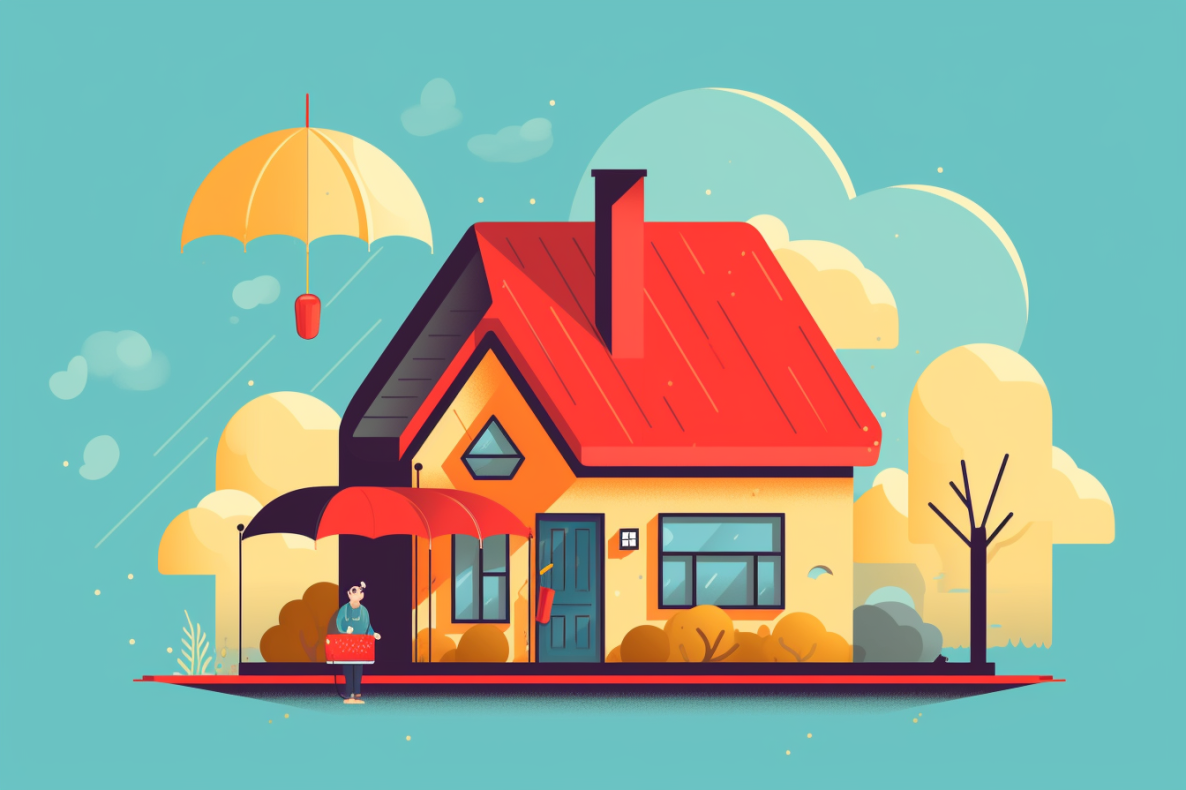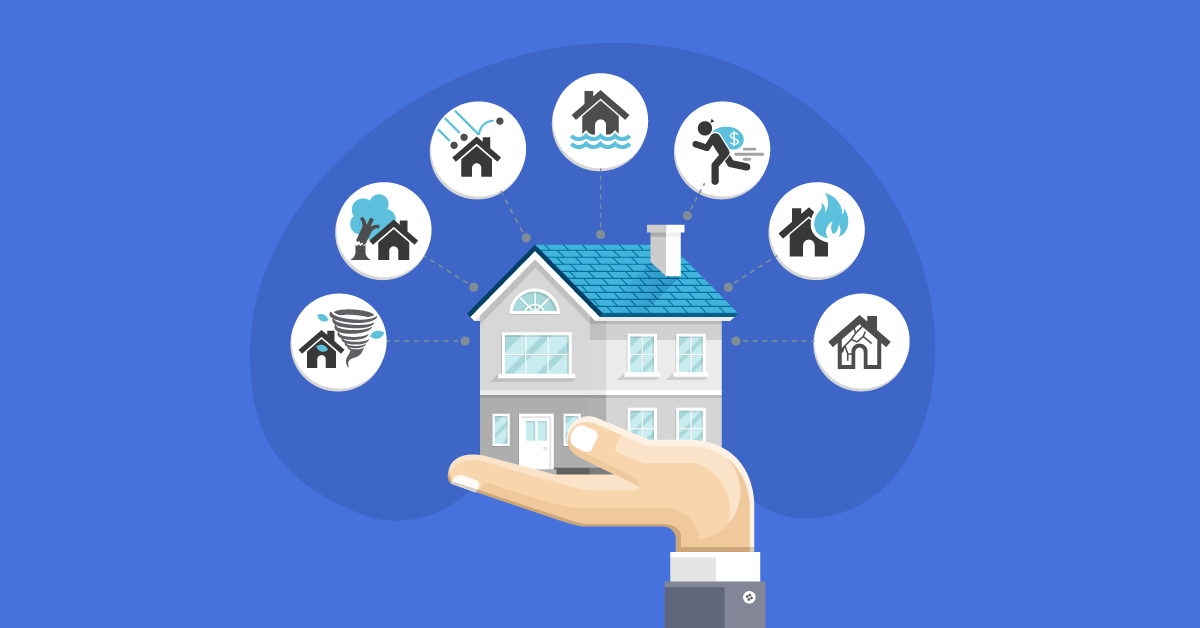It’s pretty common to watch for increases in your health, life and auto insurance once the term is up. But is the same true for your homeowner’s policy?
In this article, we’ll explore the ins and outs of home insurance costs and answer the big question, “Does my home insurance rate go up each year?”
But first, let’s take a look at how your home insurance rate is determined.
What Factors Determine The Cost Of Home Insurance?
As much as we like to envision insurance companies as generous benefactors stepping in to save the day when we need them the most, the reality is that they are for-profit businesses that regularly weigh risks.
In this industry, risk comes in the form of losing money. Therefore, the greater the chance of your carrier losing a lot of money, the greater your insurance rate.
Here are some of the major factors your insurer will watch to determine your risk.
Claims History
If you’ve filed an insurance claim on your homeowner’s policy, you can almost always expect an increase in premium when it comes time to renew.
Unfortunately, while the payout for a broken window is significantly lower than rebuilding costs for a home affected by a fire, a claim is a claim nonetheless. Although you may not experience the same hike in premium, even a small claim will likely result in a rate increase.
Your Deductible Amount
Your insurance deductible is the amount you are willing to pay out of pocket in the event of a claim.
Having a low deductible tells your insurance company two things: first, you don’t have as much skin in the game when it comes to keeping your home safe. Second, you are more likely than the average person to file a claim.
The result? A higher premium.
Where You Live
Where you live plays a huge role in determining your annual premium. Not only does each state dictate its own rates, but the crime rates and geography of the area impact how much you’ll pay each month too.
Areas that are at high risk for natural disasters (such as tornadoes, hurricanes, wildfires, and regular windstorms) will result in higher rates.
Note: Most home policies don’t provide coverage for floods, so you’ll need separate flood insurance for that.
Amount Of Coverage
Your home insurance coverage is broken up into a few different categories:
- Dwelling coverage for your home itself
- Personal property coverage, which covers everything inside your home
- Liability coverage, which protects you in situations where you may be sued (i.e., your tree falls on your neighbor’s house)
- Medical payments, which protects you if someone gets injured on your property and sues you
- Loss of use coverage, which covers a hotel or short-term rental if your home is unlivable during repairs
Generally speaking, you get to choose the amount of coverage you put toward each category. However, if you have a mortgage, your lender will likely set a minimum limit you must meet.
Not surprisingly, the more coverage you carry, the higher your premium will be.
Your Credit Score
Credit also plays a role in determining your insurance rate. If you have good credit, you could qualify for a lower rate.
Your Home
Another predictable factor in determining your home insurance rate is your house itself. Insurers will look at the age of your home (older homes will increase your rate more than a new home), your square footage, the condition of your roof, and any other features your home may have, like a swimming pool or trampoline.
Average Cost Of Homeowners Insurance

Data recently showed that as of June 2023, the average annual home insurance premium is $2,417.10.
The Most Budget-Friendly Home Insurance States
If you live in one of these five states, you will enjoy rates significantly lower than the national average.
- Hawaii: $364
- Utah: $643
- Nevada: $745
- Oregon: $784
- New Hampshire: $802
The Most Expensive States To Have Home Insurance
Unfortunately, some states have much higher rates. While you may expect California or New York to boast the highest insurance rate, they aren’t included in the five most expensive states. You’ll notice that these states are predominantly in the Midwest and owe their high rates to severe weather.
- Oklahoma: $3,651
- Louisiana: $3,549
- Mississippi: $2,734
- Nebraska: $2,591
- Texas: $2,547
- Kansas: $2,525
- Florida: $2,512
Home Insurance Rates Are Increasing
According to a recent study conducted by Insurify, rates are expected to rise significantly in several states thanks to inflation in rebuilding costs and a rise in natural disasters.
As mentioned earlier, insurance is very much a for-profit industry. Unfortunately, the number of tornadoes and hurricanes that our country has experienced has cost most carriers a pretty penny.
To help share the financial load, many insurers have increased rates across the board. For example, Florida experienced underwriting losses exceeding $1 billion for two years in a row. As a result, current homeowners shouldn’t be surprised to pay over $7,000 a year for home insurance.
Other states expected to experience a major rate hike are Oklahoma, Louisiana, Alabama, and Kansas.
Tips To Reduce Your Homeowner Insurance Rate
While it may seem like a hopeless situation, there are actually a handful of ways to keep your home insurance premiums affordable. Here’s where to start:
1. Ask About Bundling
Many insurers offer multi-policy discounts if you have more than one policy with them. The most common policies to bundle are home and auto, but you can also bundle with an RV, boat, and even life insurance if your carrier offers it.
2. Increase Your Insurance Deductible
As mentioned earlier, your deductible is the amount you’re willing to pay out of pocket in the event of a claim. A higher deductible will lower your premium. Call your agent and try a few different numbers to get to a premium that fits your budget.
3. Ask About Discounts
There are many home insurance discounts available if you know to ask. Something as simple as installing a security system or putting a fence around your pool can help reduce how much you pay each month.
4. Improve Your Credit
Because your credit score plays a role in your home insurance rate, taking the time to improve your score can pay off.
5. Tackle That Home Improvement Project
One of the main reasons older homes come with a higher rate is because time takes a heavy toll on important elements of your home. Crossing the right home renovations off your list can also help save you money.
Pay special attention to things like your roof, electrical system, plumbing, and siding. If your primary goal is to impact your rate, be sure to chat with your insurance agent to find out the most compromising aspects of your house.
6. Get Multiple Home Insurance Quotes
Finally, one of the most tried-and-true ways to reduce your insurance rate is to call around and get multiple quotes. While these decisions are commonly made when your policy renews, you can do your research and switch companies at any time during your policy.
Does Your Insurance Rate Increase Each Year?
There are a number of factors that impact your homeowner’s insurance rate, including the age and condition of your home, your credit score, where you live, and the deductibles you carry. However, there are also a number of factors that you can’t control, such as how much your carrier lost in claims (and therefore needs to make up).
Thus, while there’s no official pattern for your rate increasing each year, it’s very common for it to increase periodically. And unfortunately for many states, 2023 is expected to come with a large rate increase for thousands of homeowners.
You might also be interested in: How to Shop for Home Insurance and Different Levels of Coverage





